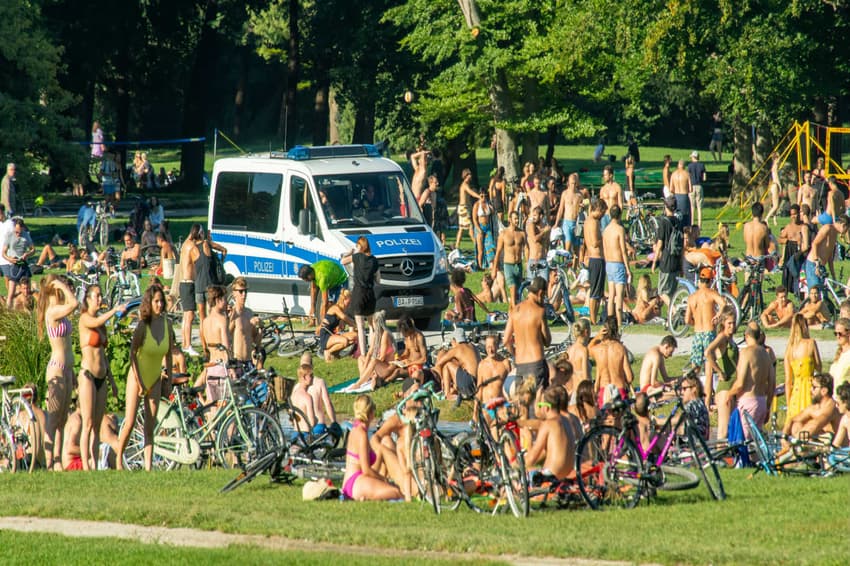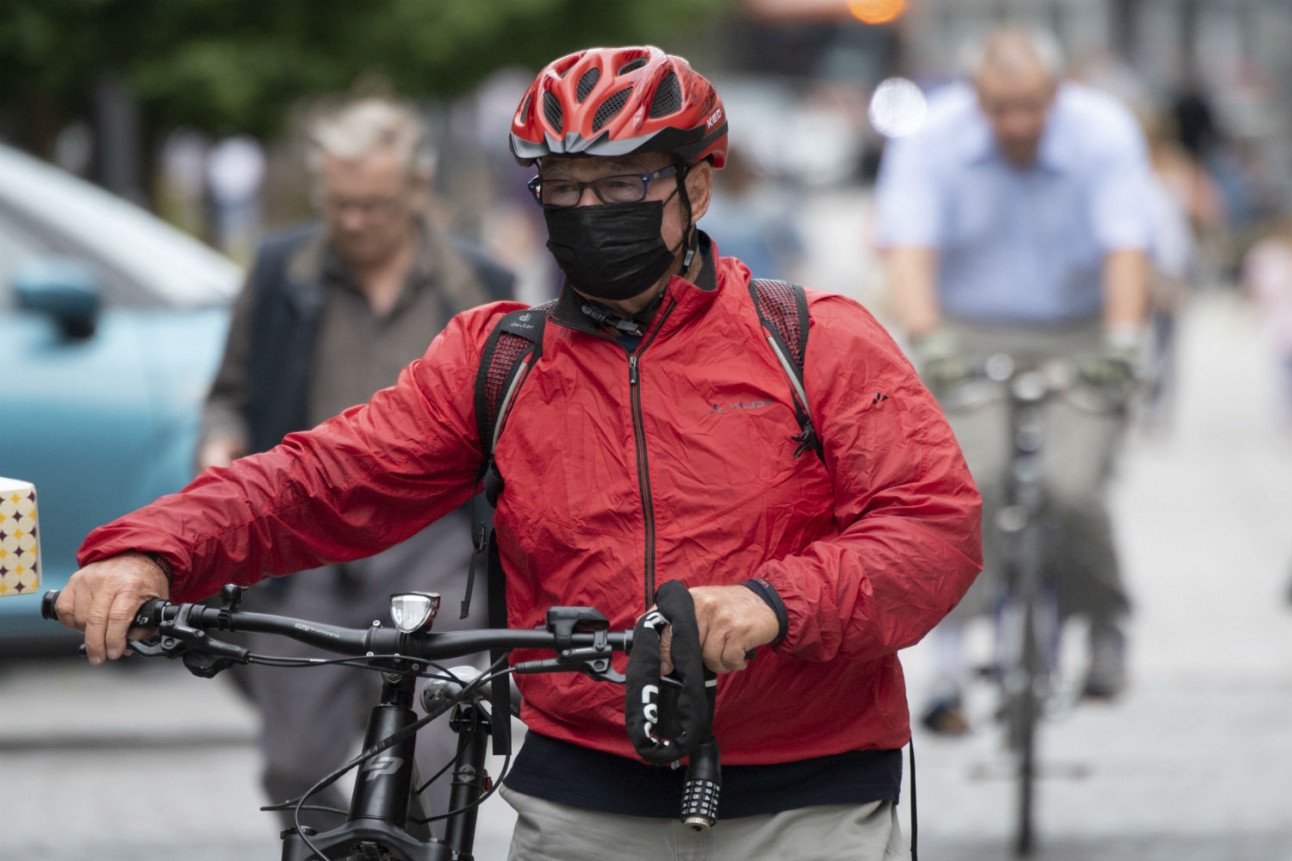These are Germany's new coronavirus hotspots

We look at which parts of Germany are reporting the largest number of new cases, and the measures they're taking to stem the spread of the disease.
In mid-June, 143 districts across Germany reported no new coronavirus infections. Yet as of Sunday, only 15 districts reported no new cases in the past seven days, according to Germany's Robert Koch Institute (RKI).
"This trend is very worrying," stated the RKI in its current situation report. "A further worsening of the situation must be avoided at all costs."
READ ALSO: How Germany is preparing for a second coronavirus wave
Germany's coronavirus hotspots are also no longer limited to just a few - as there were at the beginning of the summer due largely to outbreaks at meat processing plants - but rather scattered incidences around the country.
We take a look at the areas reporting the greatest number of new cases, and what measures they are taking to further stem the spread of the virus.
Southern Germany largely affected
Bavaria - Germany's largest state in terms of area - is particularly hard hit with new cases. According to the RKI, 203 cases were registered there on Sunday alone, which, out of 711 new infections nationwide, corresponds to almost one third of all new infections.
In terms of the past seven days, the southern state reported 1,853 new cases, which corresponds to a case rate of 14.2 infections per 100,000 inhabitants - the second highest figure nationwide after North Rhine-Westphalia (NRW), Germany's most populous state.
Only one district in Bavaria is still considered "corona-free", and in NRW there is no district without new infections.
The three Bavarian districts of Rosenheim, Ingolstadt and Ebersberg in particular are currently registering many new infections.
For example, the 7-day incidence in Rosenheim is 45.8 cases per 100,000 inhabitants, in Ingolstadt 31.4 and in Ebersberg 37.3.
Rosenheim issues new restrictions
In response, Rosenheim has began enforcing stronger restrictions for private events and for groups in public. For example, only a maximum of 50 people are allowed to participate in non-public events in closed rooms, and a maximum of 100 people are allowed at open air events.
Only members of the same household, or a maximum of five people in groups, are allowed in public.
"Up to 85 percent of the cases can be attributed to travel returnees, especially those from Southeast Europe," said the city's press spokesman, Thomas Bugl, about the cause of the increase.
This also explains another new regulation: people entering the city from risk areas must now undergo a second coronavirus test after five to seven days, the Bugl said.

A bike rider in Hanau, Hesse on Monday. The central state is particularly affected with new cases. Photo: DPA
Ebersberg: Test failure suspected as cause for high incidence
The situation is similar in the district of Ebersberg - here, too, the high infection rates are mainly associated with people returning from their holidays.
A recent test failure in Bavaria could also be a reason for the high 7-day incidence per 100,000 inhabitants in Ebersberg.
So what happened exactly? Thousands of positive coronavirus test results were only revealed after a delay. As a result, some Sars-Cov-2-positive people did not enter quarantine in time.
READ ALSO: What you need to know about Bavaria's coronavirus testing fiasco
Hessian hotspot
The part of Germany currently reporting the most new cases is the city of Offenbach. According to current RKI data, the 7-day incidence there was 55.1 new infections per 100,000 inhabitants; the city also said on Monday that it currently had a value 57.5.
According to the city, all cases of infection registered on Sunday are concerning people returning from travel.
In response, authorities tightened up measures to contain the pandemic.
READ ALSO: German city near Frankfurt tightens coronavirus rules after infection rate rises
Only meetings of a maximum of five people or two households are now permitted, and in restaurants a maximum of five people are allowed to sit at a table.
Until September 3rd, no more than 100 people are allowed to take part in outdoor events, and access to swimming pools is also limited to 100 visitors.
In addition, the city announced that it would be stepping up its monitoring of compliance with quarantine and the obligation to wear masks.
According to police, authorities issued 135 violations over the weekend for people not wearing masks or adhering to social distancing rules.
Positive test results from Frankfurt’s airport, the first in Germany to offer free coronavirus testing, are not included in the statistics.
Comments
See Also
In mid-June, 143 districts across Germany reported no new coronavirus infections. Yet as of Sunday, only 15 districts reported no new cases in the past seven days, according to Germany's Robert Koch Institute (RKI).
"This trend is very worrying," stated the RKI in its current situation report. "A further worsening of the situation must be avoided at all costs."
READ ALSO: How Germany is preparing for a second coronavirus wave
Germany's coronavirus hotspots are also no longer limited to just a few - as there were at the beginning of the summer due largely to outbreaks at meat processing plants - but rather scattered incidences around the country.
We take a look at the areas reporting the greatest number of new cases, and what measures they are taking to further stem the spread of the virus.
Southern Germany largely affected
Bavaria - Germany's largest state in terms of area - is particularly hard hit with new cases. According to the RKI, 203 cases were registered there on Sunday alone, which, out of 711 new infections nationwide, corresponds to almost one third of all new infections.
In terms of the past seven days, the southern state reported 1,853 new cases, which corresponds to a case rate of 14.2 infections per 100,000 inhabitants - the second highest figure nationwide after North Rhine-Westphalia (NRW), Germany's most populous state.
Only one district in Bavaria is still considered "corona-free", and in NRW there is no district without new infections.
The three Bavarian districts of Rosenheim, Ingolstadt and Ebersberg in particular are currently registering many new infections.
For example, the 7-day incidence in Rosenheim is 45.8 cases per 100,000 inhabitants, in Ingolstadt 31.4 and in Ebersberg 37.3.
Rosenheim issues new restrictions
In response, Rosenheim has began enforcing stronger restrictions for private events and for groups in public. For example, only a maximum of 50 people are allowed to participate in non-public events in closed rooms, and a maximum of 100 people are allowed at open air events.
Only members of the same household, or a maximum of five people in groups, are allowed in public.
"Up to 85 percent of the cases can be attributed to travel returnees, especially those from Southeast Europe," said the city's press spokesman, Thomas Bugl, about the cause of the increase.
This also explains another new regulation: people entering the city from risk areas must now undergo a second coronavirus test after five to seven days, the Bugl said.

A bike rider in Hanau, Hesse on Monday. The central state is particularly affected with new cases. Photo: DPA
Ebersberg: Test failure suspected as cause for high incidence
The situation is similar in the district of Ebersberg - here, too, the high infection rates are mainly associated with people returning from their holidays.
A recent test failure in Bavaria could also be a reason for the high 7-day incidence per 100,000 inhabitants in Ebersberg.
So what happened exactly? Thousands of positive coronavirus test results were only revealed after a delay. As a result, some Sars-Cov-2-positive people did not enter quarantine in time.
READ ALSO: What you need to know about Bavaria's coronavirus testing fiasco
Hessian hotspot
The part of Germany currently reporting the most new cases is the city of Offenbach. According to current RKI data, the 7-day incidence there was 55.1 new infections per 100,000 inhabitants; the city also said on Monday that it currently had a value 57.5.
According to the city, all cases of infection registered on Sunday are concerning people returning from travel.
In response, authorities tightened up measures to contain the pandemic.
READ ALSO: German city near Frankfurt tightens coronavirus rules after infection rate rises
Only meetings of a maximum of five people or two households are now permitted, and in restaurants a maximum of five people are allowed to sit at a table.
Until September 3rd, no more than 100 people are allowed to take part in outdoor events, and access to swimming pools is also limited to 100 visitors.
In addition, the city announced that it would be stepping up its monitoring of compliance with quarantine and the obligation to wear masks.
According to police, authorities issued 135 violations over the weekend for people not wearing masks or adhering to social distancing rules.
Positive test results from Frankfurt’s airport, the first in Germany to offer free coronavirus testing, are not included in the statistics.
Join the conversation in our comments section below. Share your own views and experience and if you have a question or suggestion for our journalists then email us at [email protected].
Please keep comments civil, constructive and on topic – and make sure to read our terms of use before getting involved.
Please log in here to leave a comment.